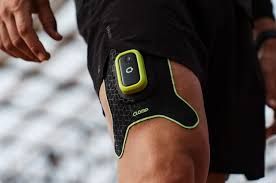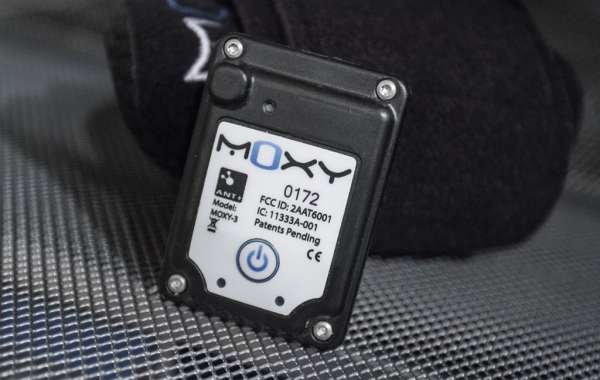What is a Muscle Oxygen Monitor?
A Muscle Oxygen Monitor is a small device used to measure how much oxygen your muscles are using during physical activity or rest. It helps athletes, trainers, doctors, and even fitness lovers know how well their muscles are working. This smart tool gives real-time data, which means it shows live results while you’re moving or exercising.
Muscle oxygen levels tell a lot about your performance, endurance, and recovery. When oxygen levels drop in muscles, it means the body is working hard and using up energy fast. On the other hand, higher oxygen levels show that your muscles are relaxed or not working too hard. Knowing this information can help improve workouts, avoid overtraining, and prevent injuries.
This article will help you understand everything about muscle oxygen monitors in very simple words. We will talk about how they work, their benefits, how to use them, and why they are useful for everyone—not just athletes.
Let’s begin by exploring the most important parts of using and understanding a muscle oxygen monitor.

How Muscle Oxygen Monitors Work
A Muscle Oxygen Monitor works by shining light into your skin to measure oxygen levels in your muscle tissues. This method is known as Near-Infrared Spectroscopy (NIRS). It sounds complicated, but it’s actually simple once you break it down.
The monitor uses safe infrared light, similar to what TV remotes use. This light goes through your skin and reaches your muscles. Oxygen in your muscles absorbs this light differently compared to muscles without oxygen. The monitor reads how much light is absorbed and calculates how much oxygen is in your muscle at that time.
The device is usually small and wireless. You can clip it to your thigh, arm, or other large muscles while exercising. It connects to your smartphone or smartwatch using Bluetooth. There’s no need for wires or big machines. You just wear it, and it gives you instant information on your phone screen.
Many modern devices also store your past data. This helps you compare your muscle oxygen levels day by day. You can see if your fitness is improving or if you’re getting tired too fast.
So, in short, the Muscle Oxygen Monitor shows live updates of how much oxygen your muscles are using. This helps people train smarter and understand their body better.
Benefits of Using This Smart Device
Using a Muscle Oxygen Monitor has many benefits for both beginners and professional athletes. Let’s look at them in very simple terms.
First, it helps you train smarter. When you can see how your muscles are performing in real-time, you can adjust your workout. For example, if your oxygen level drops too low, it means your muscle is working too hard. You can slow down or take a break to avoid injury.
Second, it improves your recovery. After a workout, the monitor tells you how fast your oxygen levels return to normal. A faster recovery means your body is getting stronger. If recovery is slow, you may need more rest or better food.
Third, it helps avoid overtraining. Many people train too much without knowing it. This causes fatigue and poor performance. The monitor shows when your muscles are not ready to work again. This warning helps you rest in time.
Fourth, it helps coaches and doctors. Trainers can use the monitor to create better workout plans. Doctors can use it to monitor blood flow or detect health problems in muscles.
Finally, it motivates you. Seeing live results on your phone makes workouts fun and challenging. You can set goals and try to improve your scores each day.
So, whether you're running, cycling, or lifting weights, this smart device gives real help. A Muscle Oxygen Monitor is not just a gadget—it’s a guide for better health and fitness.
Best Ways to Use the Device
Using a Muscle Oxygen Monitor is simple, but using it the right way gives the best results. Here’s how to use it correctly.
First, choose the right muscle. Most people attach the monitor to large muscles like the quadriceps (front thigh), hamstrings (back thigh), or biceps (arms). Choose the muscle you’re planning to use the most in your workout.
Second, place the monitor firmly on the muscle. Some devices come with straps, others with clips. Make sure it stays still during movement. If it moves too much, the data may be wrong.
Third, connect it to your phone or smartwatch. Most monitors have apps you can download. The app shows live graphs, oxygen levels, and even heart rate in some models.
Fourth, warm up before you start collecting data. Your oxygen levels may be low if you are cold or not fully active yet. After warming up, the monitor gives more accurate results.
Fifth, don’t just watch numbers—understand them. For example, if your muscle oxygen drops below 50%, it means you're working hard. If it stays high, maybe you can push a little more.
Sixth, check your oxygen recovery. After exercise, see how fast your oxygen level goes back to normal. Faster recovery means better fitness.
Lastly, keep a record. Most apps let you save your sessions. You can look back and see your progress. This helps you build a better workout routine.
In short, correct placement, good connection, and regular tracking make a Muscle Oxygen Monitor very useful.
Who Should Use This Monitor
A Muscle Oxygen Monitor is not only for elite athletes. Many people can benefit from it in different ways.
Athletes are the most common users. Runners, cyclists, swimmers, and bodybuilders use this tool to measure how hard their muscles are working. It helps them push their limits safely.
Fitness lovers can also use it. If you go to the gym or enjoy morning walks, you can use the monitor to know when your body is ready to train harder or when it needs rest.
Trainers and coaches use it to guide their students. Instead of guessing, they can use the data to build personalized plans.
Physiotherapists and doctors use it too. For patients with weak muscles, the monitor helps them check muscle health during therapy. It helps detect problems early and track recovery speed.
Older adults can also use it. As we age, blood flow and oxygen use in muscles change. The monitor can help track those changes and guide safe activity levels.
Even people with health problems like diabetes or heart issues can benefit. But they must use it under a doctor’s advice.
So, if you care about your health, want to improve your workouts, or need to recover from injury, a Muscle Oxygen Monitor is a great tool for you.
Things to Consider Before Buying
Not all Muscle Oxygen Monitors are the same. Before you buy one, think about a few simple points to get the best value.
First, check the quality of the sensor. A good monitor should give accurate readings. Read reviews or check if it is used by professionals.
Second, see if it connects well. Bluetooth connection is common. Make sure it works with your phone or smartwatch. Some apps only work with Apple or Android.
Third, battery life matters. You don’t want the battery to die in the middle of a workout. Choose one with long battery life or fast charging.
Fourth, think about comfort. The monitor should be lightweight and not hurt your skin. Some people prefer strap models while others like clip types.
Fifth, look at the app features. A good app shows graphs, stores data, and even gives suggestions. Some also connect with fitness platforms like Strava or Garmin.
Sixth, consider your budget. There are affordable and expensive models. Choose one that fits your needs. Don’t pay for features you won’t use.
Lastly, check for warranty and support. A trusted brand offers help if something goes wrong.
So, always think about quality, connection, comfort, and price when buying a Muscle Oxygen Monitor.
Tips to Improve Oxygen Use
Using a Muscle Oxygen Monitor is helpful, but you can also train your body to use oxygen better. Here are some tips to do that.
First, do regular cardio exercises. Walking, jogging, swimming, or biking improves blood flow and oxygen use. The more you move, the better your muscles get at using oxygen.
Second, try interval training. Short bursts of fast running followed by rest helps your body get stronger and smarter at using oxygen quickly.
Third, breathe deeply while exercising. Shallow breathing gives less oxygen. Learn to take slow, full breaths during workouts.
Fourth, eat foods rich in iron. Iron helps your blood carry oxygen. Foods like spinach, lentils, and red meat are good for this.
Fifth, stay hydrated. Water helps in carrying oxygen to muscles. Dehydration makes it harder for your body to function well.
Sixth, rest well. Sleep helps the body recover and build more red blood cells, which carry oxygen to your muscles.
Lastly, track your progress. Use the data from the Muscle Oxygen Monitor to see which tips are helping you improve.
So, with these simple steps, your body can become better at using oxygen, and your workouts will become more effective.
Conclusion: A Smart Tool for Better Fitness
A Muscle Oxygen Monitor is a helpful and easy-to-use device that can guide your fitness journey. It tells you when your muscles are working hard, when they are recovering, and how to improve your performance. Whether you are an athlete, a fitness lover, or someone recovering from injury, this monitor gives you real value.
It’s simple to use, and the data it provides can help you train smarter, avoid injuries, and improve faster. With the help of this tool, you can learn more about your body and reach your fitness goals with confidence.
Frequently Asked Questions (FAQs)
Q1. Is a Muscle Oxygen Monitor safe to use?
Yes, it is very safe. It uses harmless light to check oxygen in your muscles. It does not cause pain or side effects.
Q2. Do I need to be an athlete to use it?
No. Anyone who exercises or wants to know about their muscle health can use it.







